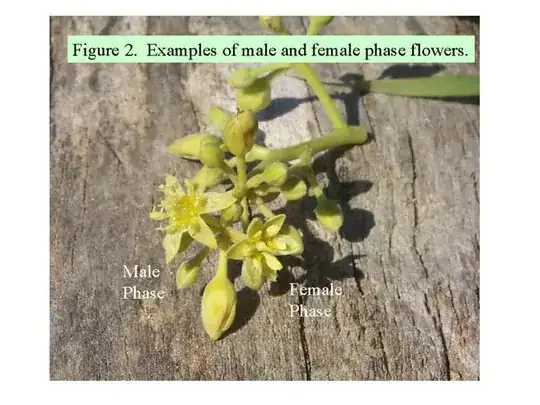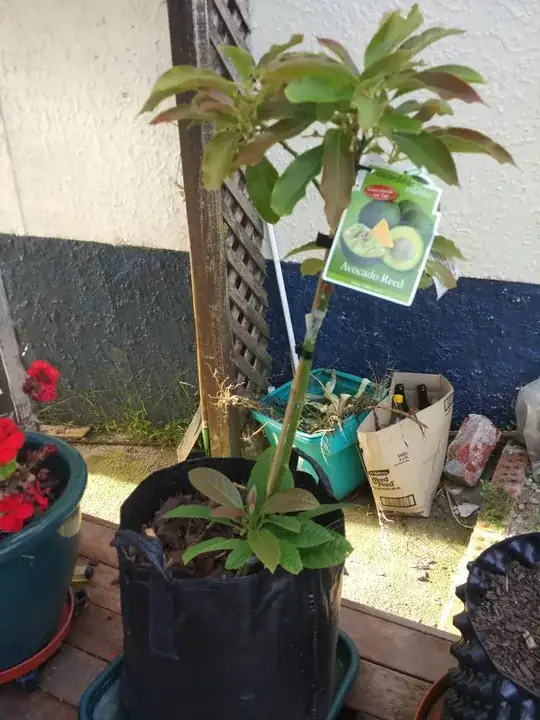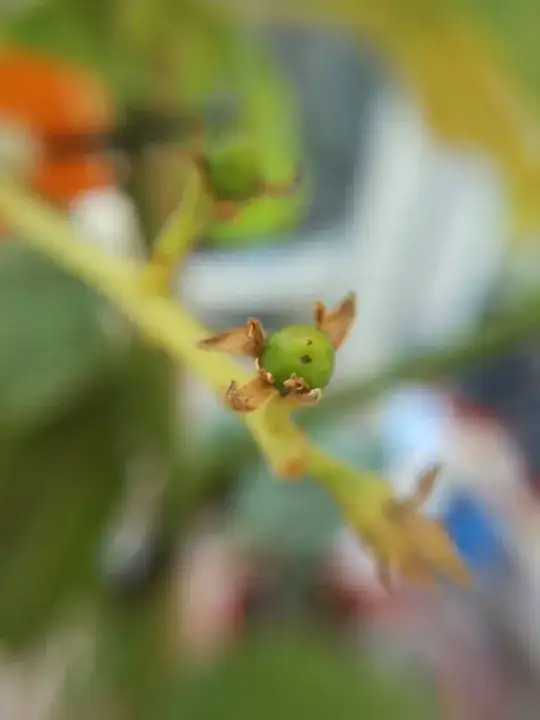Some additional notes on why this sapling has started to fruit. It seems I didn't need to purchase the B plant after all in my climate.
The flowers synchronise their sex phases - the tree slow motion switches from all flowers on the tree female flowers only, to all flowers on the tree closed, to male flowers only, to all flowers closed and so on. But the neat time-of-day synchronisation of floral gender only happens in consistently warm temperatures.
In New Zealand, there is often overlap between the genders. Some flowers are late to finish their cycle, and some flowers of the opposite gender-phase open before the last gender flowers of the previous gender-phase have all closed. In the main flowering period (when it is warmer), the Hass female flowers open around about midday. If it has been cool for some days, female flowers might not open until the late afternoon. (Recent research in New Zealand has shown that periods below 7oC push Hass female flower opening later and later in the afternoon, and then into the night.) Conversely, if it has been very warm for a few days, female flowers might even open in the morning and close at midday (as it does in hotter countries). The flower's female phase ends when the flower closes 1 or 2 hours after opening. The same flower re-opens the next day, but as a male, shedding pollen.
The Hass flowers male phase (pollen shedding phase) typically starts when the flower opens in the afternoon or evening. The flowers stay open all night, and are finally exhausted by late the next morning. But sometimes the male phase flowers open early, about mid-morning.
...
The variation in opening and closing times of the two flower phases is not particularly important. What is (somewhat) important is that there is often a little bit of overlap between the end of one flower gender phase, and the start of the other gender phase.
That said, in New Zealand's humid conditions it may well be that the male phase flower may still have viable female parts when it opens and may be able to set by itself, given a little assistance from pollinating insects (or even gravity). There is mounting evidence that the male phase flower is the one that sets the bulk of the crop (contrary to what was thought).
...
And once it is warm enough, set of the main summer and autumn cultivars (Hass and Reed) is virtually assured.
Whatever the intricacies of flower pattern, in New Zealand's variable spring climate at least, Hass sets well in the backyard without any need for pollen from a different cultivar - as does the late-setting Reed variety. The 'up and coming' Hass-like green-skinned 'Gwen' variety also has a reputation for similar easy reliability. As long as only these varieties are planted, they will set fruit.

Image showing gender overlap of the flowers
http://www.lauriemeadows.info/food_garden/fruit/Avocado_Pollination.html



